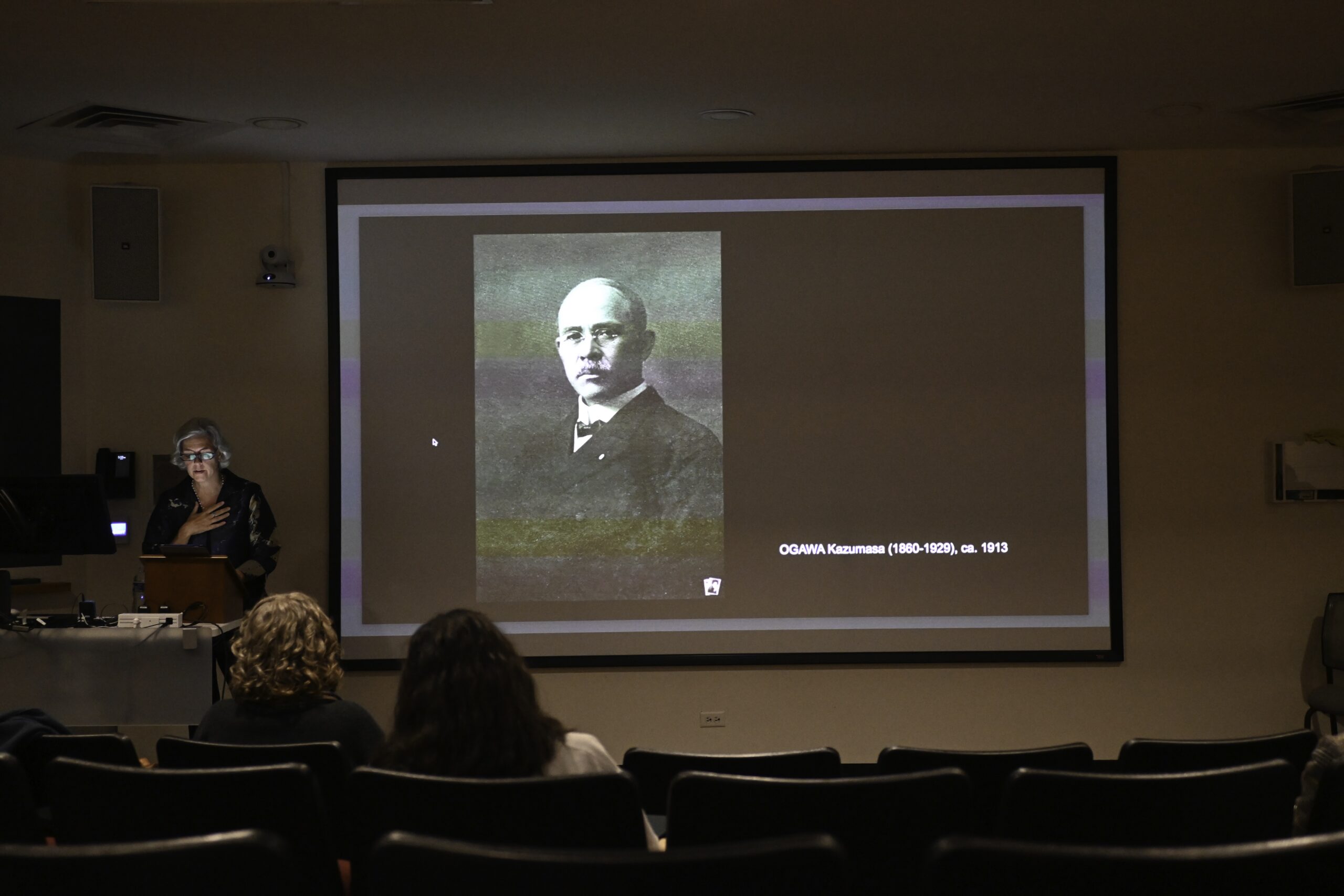Dr. Karen Fraser speaks on Ogawa Kazumasa’s photography and cross-cultural connection
October 18, 2024
 Thetis Fourli
Thetis FourliLast Tuesday, the Bowdoin College Museum of Art (BCMA) brought Dr. Karen M. Fraser, professor of art history at the University of San Francisco, to discuss the photography of Ogawa Kazumasa. His photos are currently viewable as part of the BCMA’s “Witnessing War: Ogawa Kazumasa and Visual Culture in Early Twentieth-Century Japan” collection. Fraser’s talk gave an overview of Ogawa’s work, unpacking the political valences and transcultural connections of his English, Japanese and bilingual collections in Meiji-era Japan.
BCMA curator Casey Braun organized the exhibition, which marks one of the first times a United States institution has displayed Ogawa’s work. Upon receiving Ogawa’s war photography, Associate Professor of History and Asian Studies Sakura Christmas connected Braun with Fraser.
“[It] turned out that [Fraser’s] current book project is looking at the historiography of 19th century and early 20th century photography in Japan, but specifically looking at Ogawa and his contributions,” Braun said. “When she’s finished with her research, it will be the first English-language book-length publication on Ogawa.”
Fraser’s talk centered on Ogawa’s journey as both a photographer and a businessman and on his representation of how Japan was perceived by the West during the Meiji period. Ogawa made his own images and published others’ works in photo books meant to be sold to travelers from the United Kingdom and America. These books prominently displayed traditional Japanese iconography, such as samurai and geisha, far after their peak popularity.
“[The] overarching thesis to this material is that [the photos] articulate and reinforce the romanticization and exoticization of Japanese culture from a Western gaze,” Fraser said. “Images showing literally any kind of new contemporary ideas or modern adaptations of historical practices are notably absent.”
The anachronistic lens depicted many technologies or practices that were used at the time, such as the rickshaw, as ancient practices. Fraser stated that Ogawa’s work was a commercial project, and this displacement in time existed as a way to “sell” Japan to foreigners.
“It’s all about the romanticization,” Fraser said. “Westerners don’t know one way or another…. It’s really selling this idea [of Japan]. You have to wonder: If [Ogawa] did actually produce an album in the English language that showed industrial machinery and Japanese men and women wearing Western clothing, would Westerners have bought that?”
Fraser noted that the gendering of how Ogawa’s work presented men and women had an international political perspective as well.
“[His photographs] tend to really position women as objects of curiosity,” Fraser said. “He poses them in front of the camera in ways that invite the viewer to really labor over their appearances.… They also tended to have quite inviting text as their captions. These texts suggest the availability of women, not just to the Western gaze, but to the gaze of the Western viewer himself.”
Fraser also emphasized that while the English language books focused on Japanese feudal tradition, the photos produced for Japanese audiences gave a more modern perspective, particularly on military successes in the Russo-Japanese and Sino-Japanese Wars.
“The depiction of both of these wars was very much about celebrating Japanese modernization,” Fraser said. “Its prowess with contemporary military technologies [is] intended to appeal to both the Japanese and Western English speaking viewers. If you can sell books to both sides with one printing … you’re making more money.”
Braun further highlighted how this artistic tension in depiction stretched further than simply Ogawa’s work.
“There was this real tension in Japanese society at the time of: ‘How do we want to present ourselves?’” Braun said. “As people from the U.S. are starting to visit, there’s this huge increase in the market … for the material culture of traditional and pre modern Japan. With Ogawa’s work, we really see the full spectrum of a nation that was really trying to define how it wanted to be seen and understood in international politics.”

Comments
Before submitting a comment, please review our comment policy. Some key points from the policy: